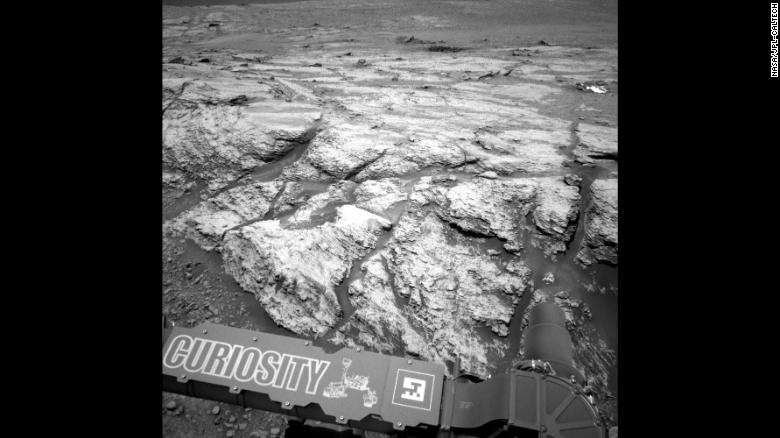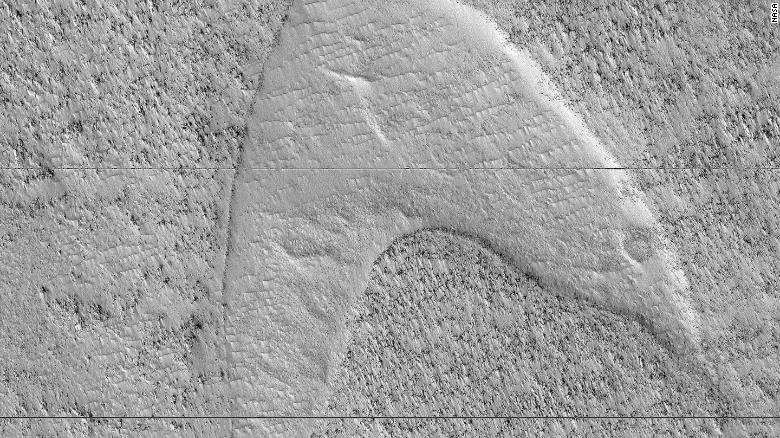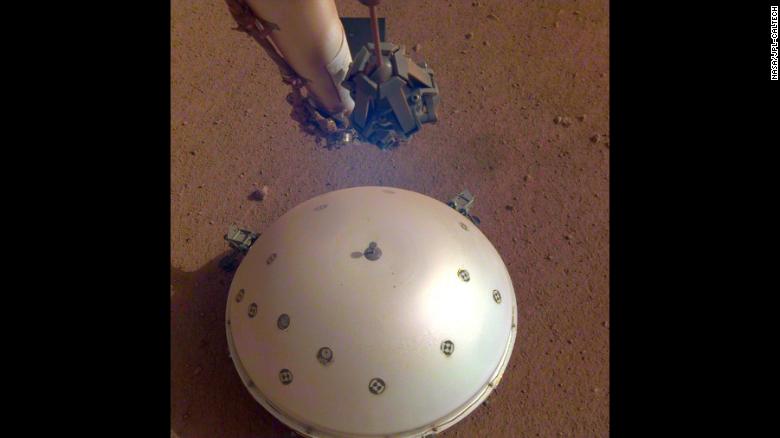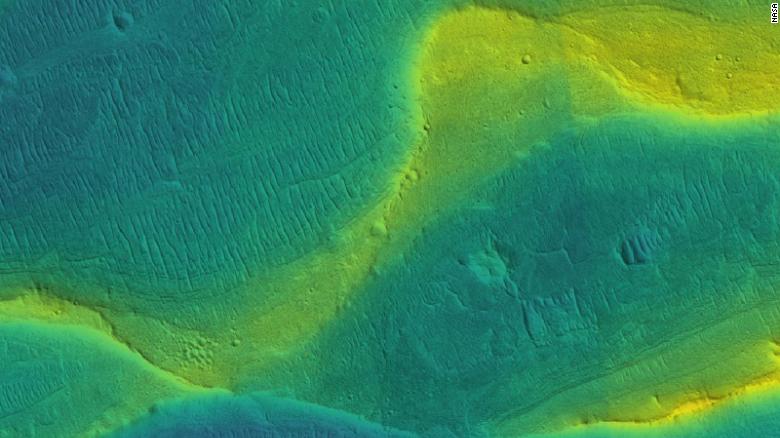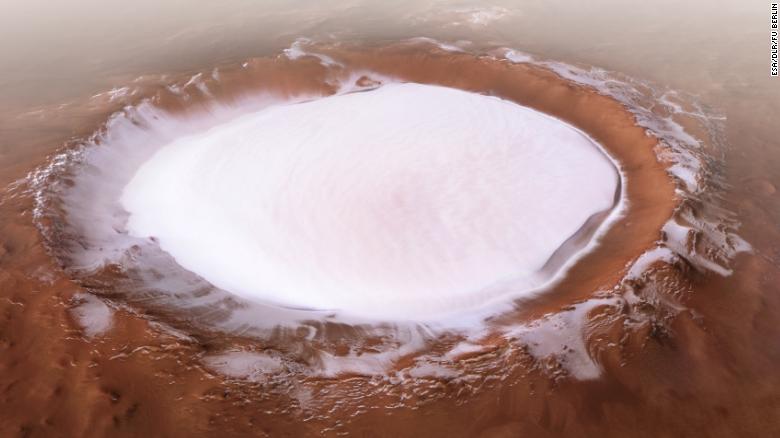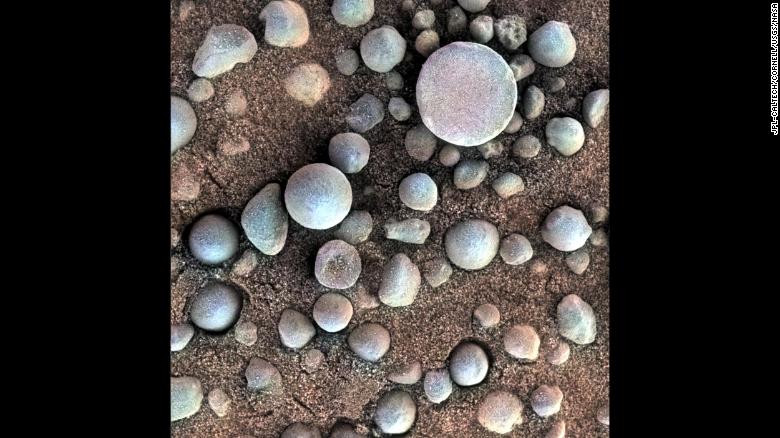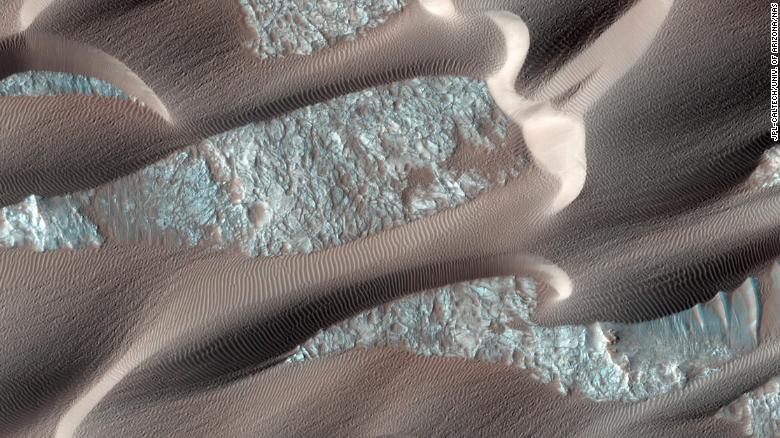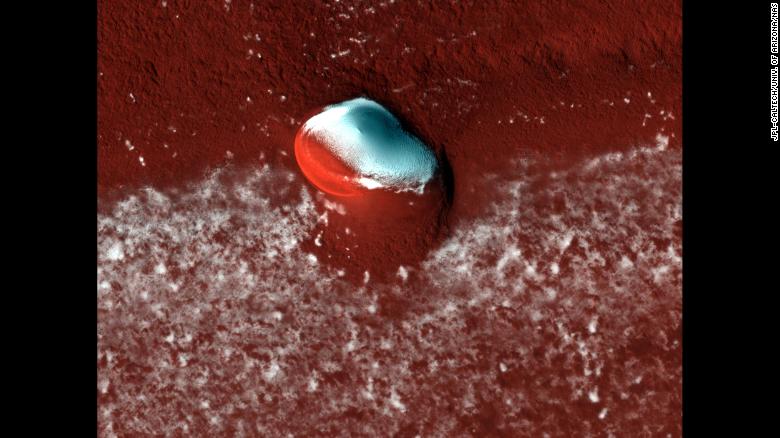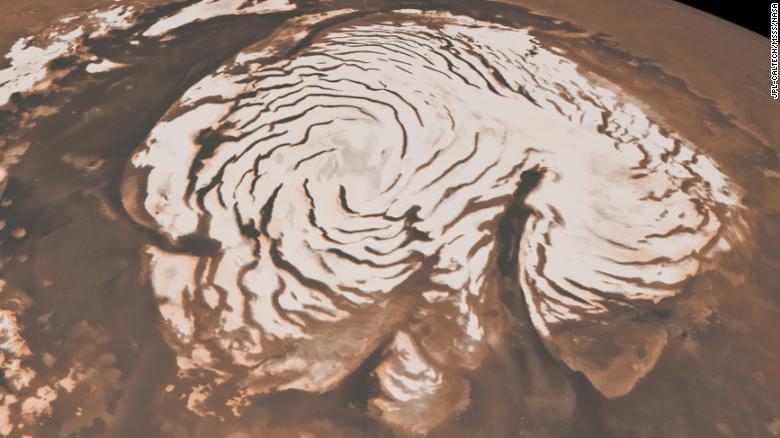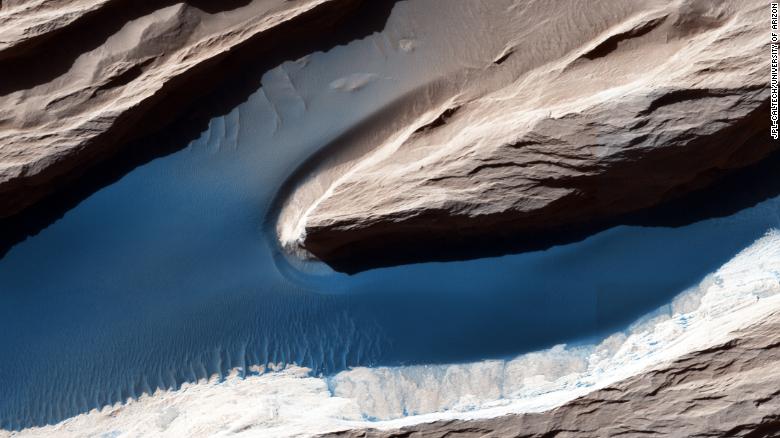كشفت صور جديدة لسطح كوكب المريخ التقطتها وكالة الفضاء الأوروبية ونظيرتها الروسية الكوكب المشهور بالكوكب الأحمر على نحو لم يره العالم من قبل، حيث بدا مثل حلوى «الكوكيز والكريمة» وليس باللون الأحمر المعتاد.
وبدت على الجانب الأيمن من الصور كثبان على شكل أهلة، وبات بوسع العلماء من خلال مشاهدة الصورة القول بأن رياحا ثانوية كانت وراء تشكيل هذه الكثبان.
كما التقطت وكالة الفضاء الأمريكية (ناسا) صورا تكشف عن صخور ورمال تجمدت معا بفعل الزمن وقاومت بعضها التآكل بفعل الزمن بينما بدت مظاهر التآكل على البعض الآخر.
